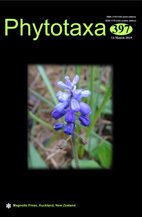Abstract
Acrylic varnish B01-6 is extensively applied to protect exquisite wall paintings of Wu-Kui Tomb by spraying on the murals to form a hyaline membrane avoiding the color fading and deterioration. However, serious ‘white moldy spots’ are observed on the B01-6 coatings area on the murals seasonally. Culture-dependent and culture-independent approaches reveal that the fungal community of ‘white moldy spots’ is dominated by three hypocrealean fungal taxa. Evidence for these species is provided by morphological comparison and phylogenetic analysis of LSU and ITS sequence data. Two known taxa, namely, Acremonium camptosporum and Sarocladium kiliense, are identified. One novel taxon, Leptobacillium muralicola is also described and compared with other Leptobacillium species. Leptobacillium muralicola can be distinguished from other Leptobacillium species by the colonial color changes from greyish white to greenish white over time, and less ratio of conidial length/width.

